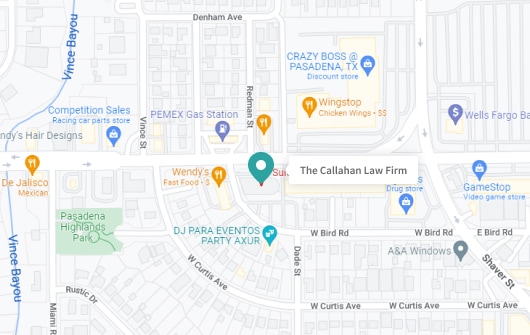Most Common Out-of-Service Violations as Found by the CVSA

Every year The Commercial Vehicle Safety Alliance hosts an International Roadcheck, a 3-day inspection event that works to discover out-of-service violations and remove unsafe trucks and 18-wheelers from the roads.
These vehicles are the backbone of the economy, so ensuring they operate safely is imperative, protecting drivers and fellow road users. The Commercial Vehicle Safety Alliance (CVSA) is dedicated to improving commercial vehicle safety through rigorous inspections and enforcement programs. Their mission is simple yet vital: to prevent commercial vehicle accidents, injuries, and fatalities.
In this article, we’ll delve into the importance of identifying out-of-service violations—those that render a vehicle temporarily unfit for the road—and the significant role played by the CVSA in this critical task.
What are the Most Common Out-of-Service Violations?
Out-of-service violations are serious enough to warrant taking a vehicle or driver out of service, meaning they cannot continue operating until the violations are addressed and resolved. The following are the most common out-of-service violations:
- Hours of Service (HOS) violations
- Commercial Driver’s License (CDL) violations
- Drug and Alcohol violations
- Vehicle Weight violations
- Hazardous Materials violations
- Driver Qualification violations
We will explain these out-of-service violations in more detail in the article.
Most Common 2023 Out-Of-Service Violations
The unannounced out-of-service violations for 2023 occurred on April 19th. This road check, which took place in Canada, the USA, and Mexico, oversaw the inspection of 6,829 vehicles. The result found 11.3% of the inspected vehicles had brake-related issues indicating that those vehicles were unfit to be on the road, leading to the restriction of 773 commercial vehicles until the issues found were fixed.
The top three brakes-related out-of-service violations found were:
- 20% brakes violation—479 vehicles found guilty
A vehicle is declared out of service when 20% of its brake has an out-of-service condition resulting in a faulty brake such as a missing brake where brakes are needed, defective pads, an audible air leak, etc. - 81 vehicles were found to have steering brake violations
Examples of steering brake violations are defective linings, mismatched brake chambers, broken brakes, etc. - 368 other brake violations were found
Other brake violations include air leaks, broken brake drums, hydraulic fluid leaks, worn brake lines, etc.
What do the CVSA Inspections Entail?
Inspectors meticulously examine various aspects of a commercial vehicle during an inspection to assess its roadworthiness. This includes checking the braking system, lighting components, tires, and other critical components. They also review important documentation, such as the driver’s logbook, to verify compliance with Hours of Service (HOS) regulations.
The inspections are an important means to identify and address safety violations before they lead to disastrous consequences.
CVSA’s inspection program plays a crucial role in maintaining the safety of commercial vehicles on our roads. These inspections are conducted by well-trained inspectors who follow standardized procedures to thoroughly examine the vehicles and identify potential safety violations.
The frequency and scope of CVSA inspections are designed to ensure comprehensive coverage. Inspections can occur at various locations, including roadside checkpoints, weigh stations, and even during routine traffic stops. This broad reach allows for a comprehensive examination of various commercial vehicles.
The purpose of these inspections goes beyond mere compliance. They are meant to identify any violations that could jeopardize the safety of the commercial vehicle operator and other road users.
What are Out-of-Service Violations?
Out-of-service violations refer to specific safety violations discovered during CVSA inspections that render a commercial vehicle temporarily unfit for the road. These violations are serious enough to pose an immediate risk to the safety of drivers, passengers, and other road users.
When an out-of-service violation is identified, the commercial vehicle is placed out of service until the violation is resolved. This means the vehicle cannot continue its journey until the necessary repairs or corrections are made to address the safety concern.
The identification and addressing of out-of-service violations are crucial for the following reasons:
- It ensures the safety of all individuals on the road.
- Taking unfit vehicles out of service significantly reduces the risk of accidents, injuries, and potential fatalities.
- Out-of-service violations are a strong deterrent to non-compliance with safety regulations.
- Strictly enforcing these violations sends a clear message to commercial vehicle operators that safety standards must always be followed.
- It helps promote a safety culture within the industry and encourages operators to prioritize the well-being of their drivers and the public.
The consequences of out-of-service violations can be significant for commercial vehicle operators. In addition to the immediate impact of halted operations and delayed deliveries, there may be financial repercussions. Violations can result in fines, increased insurance premiums, and potential loss of business reputation.
Most Common 2023 Out-of-Service Violations Explained
During CVSA inspections, several violations are frequently identified, rendering commercial vehicles temporarily unfit for the road. Knowing these common violations can help individuals gain insights into areas where safety improvements are necessary. Let’s explore the most prevalent out-of-service violations:
Braking System Deficiencies
A well-functioning braking system is crucial for the safe operation of any vehicle. Brake-related violations often top the list of out-of-service violations. In the unannounced out-of-service violations conducted on April 19, 2023, 11.5% of the 5,901 vehicles inspected in the USA were found guilty of brake-related violations.
Inspectors check for issues such as worn brake pads, faulty brake lines, or inadequate brake pressure. Any compromise in the braking system’s effectiveness can jeopardize the vehicle’s ability to stop promptly, increasing the risk of accidents. Another brake safety check has been scheduled to take place on August 20-26 this year.
Lighting-Related Violations
Proper lighting is vital for visibility and communication on the road. Lighting violations encompass a range of issues, including broken or malfunctioning headlights, taillights, turn signals, and reflectors. These violations can diminish the visibility of a commercial vehicle, making it difficult for other drivers to anticipate its movements, especially during low-light conditions.
Tire-Related Violations
Healthy tires are essential for maintaining grip and stability while driving. Tire-related violations often involve inadequate tread depth, mismatched tire sizes, or improperly inflated tires. Such violations increase the risk of blowouts, loss of control, and accidents. Inspectors pay close attention to tire conditions during inspections to ensure vehicles are equipped with safe and properly maintained tires.
Hours of Service (HOS) Violations
Fatigue can impair a driver’s ability to operate a vehicle safely. HOS violations involve non-compliance with regulations that dictate how long a driver can be on duty and how much rest they must have. These violations often arise from falsified logbooks or exceeding the maximum allowable driving hours. Addressing HOS violations is crucial for preventing fatigue-related accidents and ensuring drivers are well-rested.
Vehicle Maintenance Issues
Regular maintenance is essential for keeping commercial vehicles in optimal condition. Maintenance-related violations include failure to address known mechanical problems, improperly secured loads, or damaged safety equipment. Neglecting vehicle maintenance compromises the overall safety and reliability of the vehicle, increasing the likelihood of accidents on the road.
What are the Impacts of Out-of-Service Violations?
Out-of-service violations have significant impacts on both safety and the commercial vehicle industry as a whole. Understanding these impacts is crucial for recognizing the importance of addressing and preventing these violations. Let’s discuss the effects of out-of-service violations below:
Safety Risks
Out-of-service violations are indicators of potential safety hazards. These violations often involve critical components of a vehicle, such as brakes or tires, that directly affect its ability to operate safely. Failure to address these violations increases the risk of accidents, putting the lives of drivers, passengers, and other road users in danger.
Financial Implications
Out-of-service violations can have significant financial consequences for commercial vehicle operators. When a violation is identified during an inspection, the vehicle is placed out of service until the necessary repairs are made. This interruption in operations can result in lost revenue, delayed deliveries, and increased costs.
Legal Consequences
Non-compliance with safety regulations can lead to legal issues for commercial vehicle operators. Regulatory authorities take Out-of-service violations seriously, and operators found to be in violation may face legal penalties, including fines and even the suspension of operating privileges. These legal consequences impact the operator’s reputation and can have long-lasting effects on their ability to conduct business. Operators can safeguard themselves from these legal ramifications by prioritizing safety and addressing out-of-service violations.
How to Prevent Out-of-Service Violations?
Preventing out-of-service violations is crucial for maintaining the safety and integrity of commercial vehicles. Let’s explore some key strategies for preventing out-of-service violations:
Education and Training Programs
Proper education and training play a fundamental role in preventing out-of-service violations. Commercial vehicle operators should invest in comprehensive training programs that cover safety regulations, proper vehicle maintenance procedures, and driver responsibilities. By equipping drivers and maintenance personnel with the necessary knowledge and skills, operators can promote a culture of safety and compliance within their organization.
Regular Vehicle Maintenance and Inspection
Regular vehicle maintenance is essential for preventing out-of-service violations. Operators should establish routine maintenance schedules and adhere to manufacturer recommendations for inspections and servicing. This includes checking and maintaining critical components such as brakes, tires, lights, and safety equipment. By conducting thorough inspections and addressing issues promptly, operators can identify potential violations before they become major safety concerns.
Utilization of Technology and Advanced Safety Features
Advancements in technology have provided commercial vehicle operators with tools to enhance safety and prevent violations. Operators should consider investing in technologies such as electronic logging devices (ELDs) for accurate record-keeping, advanced braking systems, tire pressure monitoring systems, and telematics solutions. These technologies provide real-time data and alerts, enabling operators to proactively monitor and address potential violations.
Collaboration Between Regulatory Agencies and Industry Stakeholders
Close collaboration between regulatory agencies, industry associations, and commercial vehicle operators is vital for preventing out-of-service violations. Operators should stay informed about changes in safety regulations and participate in industry forums and training programs. Open communication with regulatory authorities can help operators better understand compliance requirements and address concerns or questions.
Promoting Safe Roads and Responsible Commercial Vehicle Operations
The CVSA’s rigorous inspection program, conducted by well-trained inspectors, serves as a critical mechanism for identifying and addressing safety violations. Through these inspections, the CVSA aims to prevent accidents, injuries, and fatalities involving commercial vehicles, safeguarding the lives of drivers and the public alike.
If you or a loved one have been involved in a car accident due to an out of service violation by a commercial motor vehicle such as an 18-wheeler, tanker truck, tractor truck, flatbed tractor-trailer, dump truck or other type of commercial motor vehicle, you need a car accident lawyer in Houston and Pasadena experienced in representing people injured in car accidents and trucking accidents. Contact us today for a free case review.
FAQs
Q: What are the two most common hours of service violations?
A: The two most common hours of service (HOS) violations are:
Exceeding the maximum driving time: This violation occurs when a commercial vehicle driver exceeds the maximum allowable driving hours within a specific period.
Falsifying log books or records: This violation involves intentionally falsifying HOS records, such as driver log books or electronic logging device (ELD) records, to show compliance with regulations when the actual driving or rest time differs.

Michael S Callahan is an attorney and founder of The Callahan Law Firm. He focuses his practice on representing individuals and families in personal injury cases involving motor vehicle and truck accidents, workplace accidents and defective products. With over 25 years of experience, he is dedicated to fighting on behalf of people whose lives have been forever altered by the negligence and carelessness of corporations and individuals. Originally trained as a mechanical engineer, Michael has been practicing law and fighting for justice for those who need it most since 1994. He is board-certified in Personal Injury Trial Law by the Texas Board of Legal Specialization and a member of various esteemed legal associations. Outside of work, Michael enjoys spending quality time with his family, outdoor activities, and continually striving to improve as a trial lawyer and human being.











